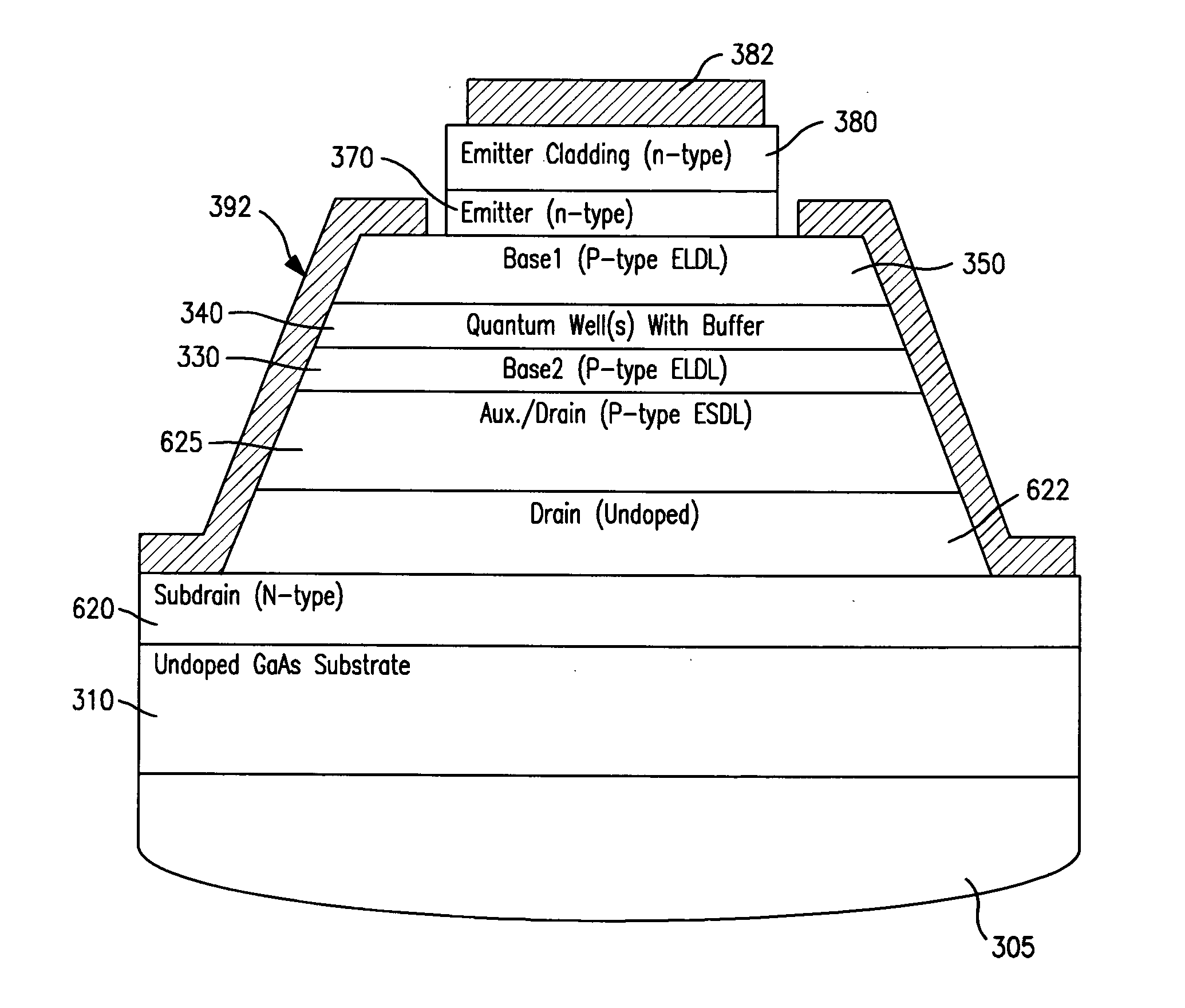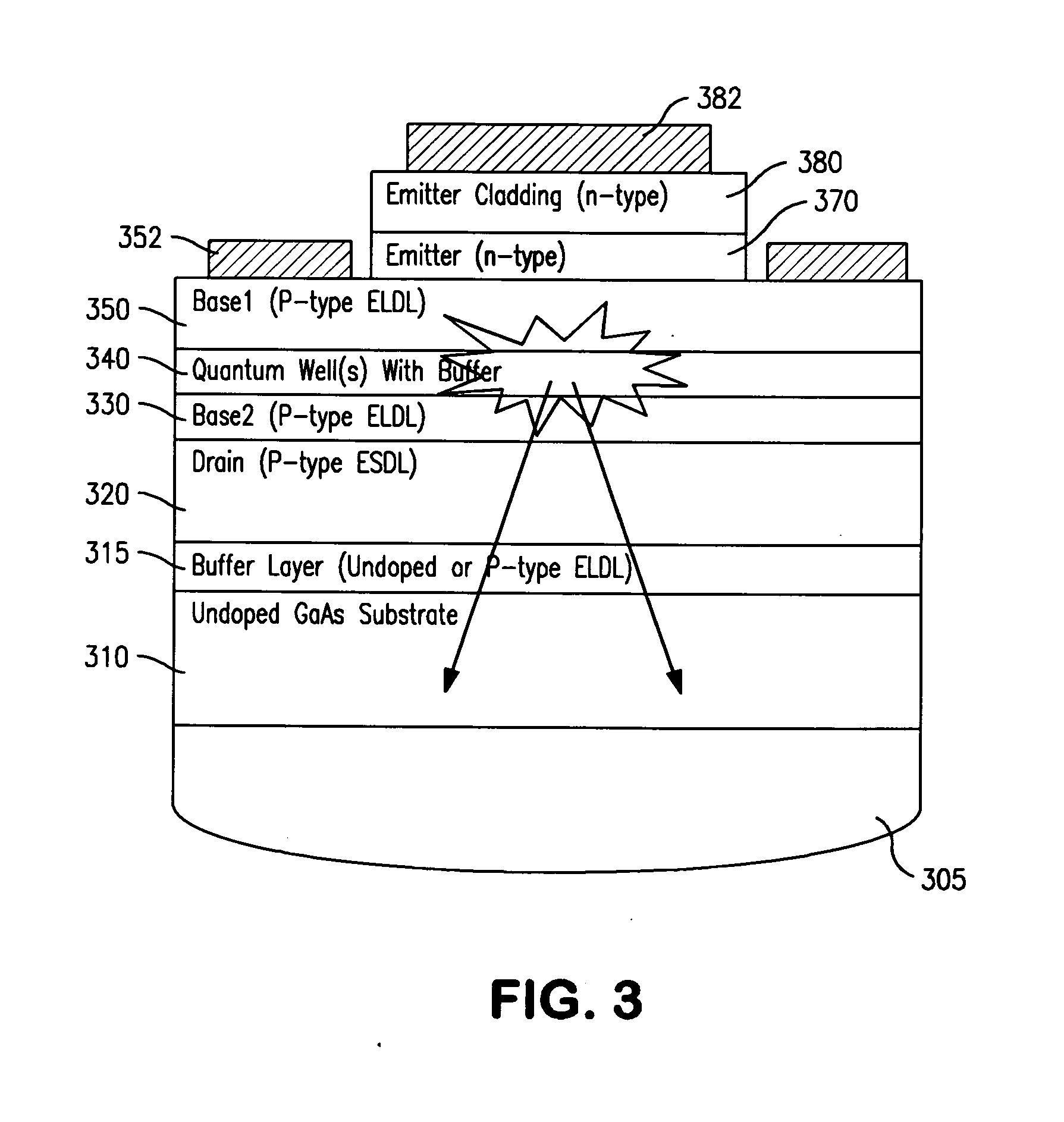Light emitting and lasing semiconductor methods and devices
a technology of semiconductors and semiconductor lasers, applied in semiconductor lasers, semiconductor devices, electrical apparatus, etc., can solve the problems of limited intrinsic high speed capability of devices, and achieve the effects of excellent devices for material study, small base recombination lifetime and fast recombination speed
- Summary
- Abstract
- Description
- Claims
- Application Information
AI Technical Summary
Benefits of technology
Problems solved by technology
Method used
Image
Examples
Embodiment Construction
[0028]The diffusion length (L) of a minority carrier in the material of a semiconductor device is given as:
L=√{square root over (D×τ)}
where, D, is the diffusion coefficient, which depends on the carrier mobility in the semiconductor, and μ is expressed in:
D=μ×kTq
where q is the charge, T is temperature, and k is the Boltzmann constant. The carrier mobility, μ, is proportional to the average scattering time, which is dependent, among many factors, on doping concentrations, defect concentrations, and semiconductor material composition (for example, GaAs versus AlGaAs (binary vs. alloy), or GaAs vs. InP (different material systems)). The minority carrier lifetime, τ, is also dependent, among other factors, on free carrier concentrations (related to doping concentrations), defect energy levels, and defect concentration. In regions of short minority carrier diffusion lengths, minority carriers have higher probability of recombining with majority carriers per unit distance.
[0029]A tilted-c...
PUM
 Login to View More
Login to View More Abstract
Description
Claims
Application Information
 Login to View More
Login to View More - R&D
- Intellectual Property
- Life Sciences
- Materials
- Tech Scout
- Unparalleled Data Quality
- Higher Quality Content
- 60% Fewer Hallucinations
Browse by: Latest US Patents, China's latest patents, Technical Efficacy Thesaurus, Application Domain, Technology Topic, Popular Technical Reports.
© 2025 PatSnap. All rights reserved.Legal|Privacy policy|Modern Slavery Act Transparency Statement|Sitemap|About US| Contact US: help@patsnap.com



